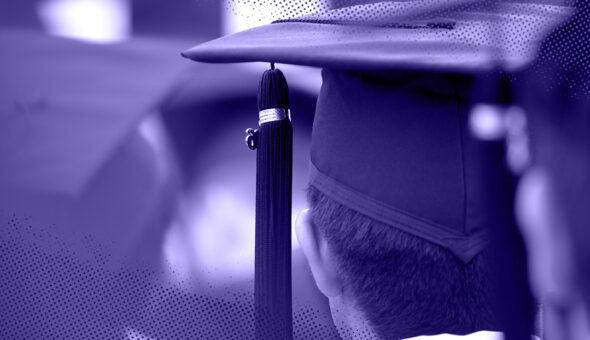Historically Black Colleges and Universities have enjoyed a rare spotlight in recent years, in part due to larger societal questions about race and equality in the United States. The spotlight has helped expose decades-long inequities between traditional public universities and HBCUs while giving the American public a close look at the challenges many of these proud schools are facing, including overcoming the HBCU funding gap.
HBCUs Focus on STEM, Funding Gap
Increases in both private and public dollars are needed to encourage research projects and remedy a decades-long funding gap.

The Historical Gap
It starts with and generally revolves almost exclusively around funding. A bevy of combined research from media outlets, higher ed institutions and government bureaus during the past three years suggests the country’s traditional land-grant universities received nearly $13 billion more in total per-student funding during the past 25 years than the country’s approximately 105 HCBUs.
That simple disparity, interviewed HBCU leaders and activists say, has created a domino effect that makes climbing out of the proverbial money hole and moving forward with new projects incredibly challenging, if not impossible. Although states are primarily responsible for funding public land-grant universities, the federal government also awards lucrative grants to students and universities with robust research initiatives. In a nutshell, without the money to fund research projects now, HBCUs lack the foundation for keeping up with other U.S. universities in the future.
“The result has been limited faculty hires, and the majority of these hires are saddled with heavy teaching loads and other administrative responsibilities, leaving them little time for focused research activity,” explained Joseph Whittaker, an associate provost and VP of research and economic development at Jackson State University. “It has forced HBCUs to rethink their strategy for impactful research engagement.”
Jackson State, located in the capital city of Mississippi, ironically received its highest-ever quantity of research funding, approximately $65 million, this year from mostly federal grants. That funding, combined with the research grants given to most of the other 105 HBCUs, will almost certainly fall short of the more than $3 billion in funding that top research university John Hopkins will receive on its own this year, Whittaker said.
Leading with STEM
Clearly, the gap between the haves and the have-nots can’t be repaired in just a few years. But where can HBCUs start to put their best foot forward?
At Jackson State, Whittaker said the university is going all-in on STEM disciplines by using as much funding as possible to hire faculty and improve program offerings in those fields.
“These areas are central to accelerating growth of the research enterprise and attracting the required funding to the institution,” he opined.
The school is also focusing on social, behavioral and economic sciences as a way of scaling research beyond STEM. Whittaker said cybersecurity, data science, health disparities, food security and coastal resilience are also among key new areas of growth at JSU.
Brainstorming together
Melanie Carter has served as an associate provost at Howard University and directed its HBCU Center for Research since it opened in 2021. The center’s initiative to develop comprehensive research on higher education institutions that serve people of color has led to more than three dozen HBCUs brainstorming with Howard students on proactive next steps to level the funding gap.
Though the center has yet to spearhead lobbying efforts for major HBCU-related bills in Washington D.C. or make a significant impact in raising money, its webinar series titled “Policy, Positions, and Perspectives” has gained hundreds of student and faculty followers. The center has also begun offering fellowship programs for those interested in leading HBCU advocacy.
“We’re essentially encouraging interdisciplinary collaboration among institutions on work and research,” Carter said. “We believe it generates a rich conversation and helps us move faster to produce results.”
Donations welcomed, but not sustainable long-term
One of the perks of being thrust into the national spotlight in recent years for HBCUs has been an influx of private donations.
Philanthropist MacKenzie Scott donated a combined $550 million to 22 HBCUs in the wake of George Floyd’s death at the hands of a Minneapolis police officer in early 2020. That year, HBCUs also secured an additional $249 million in private funding. All in all, 2020 and 2021 were the best years on record, funding-wise, for the schools.
Although the injection of cash was much welcomed, donations have since dried up to near pre-pandemic levels. The lesson? Even donors can’t make up for a lack of state and federal funding.
“Two years of good funding does not fill in for over 150 years of being neglected and underfunded by our governments and philanthropic partners,” said Lodriguez Murray, vice president of public policy and government affairs for the United Negro College Fund. The UNCF is the country’s largest private supporter of Black students.
Murray and his team have turned to Capitol Hill for answers, lobbying to increase the amount of federal Pell Grant money available to tens of thousands of students from low-income households that attend HBCUs. Also on the list of UNCF’s priorities is the IGNITE HCBU Excellence Act, which would allocate millions in federal funding to help fix worn-down infrastructure and facilities at many HBCUs.
“We believe much of our future lies in Congress acting to pass these appropriations bills, which adequately fund the Department of Education and address HBCU priorities,” Murray said.
Newsletter Sign up!
Stay current in digital strategy, brand amplification, design thinking and more.
Recent in Donor & Alumni Relations
Also in Donor & Alumni Relations

Turning the page on tradition.
A deep dive into the magazines that keep alumni connected, informed and inspired.

Podcasts give alumni and universities a chance to build their brands.
More schools are using the new media to engage current students while also keeping successful graduates in the fold.

How Are Commencement Speakers, Honorary Degrees Selected?
Amid the 2024 spring semester division, higher education institutions cite unifying selection criteria for honorary degrees and commencement speakers.




